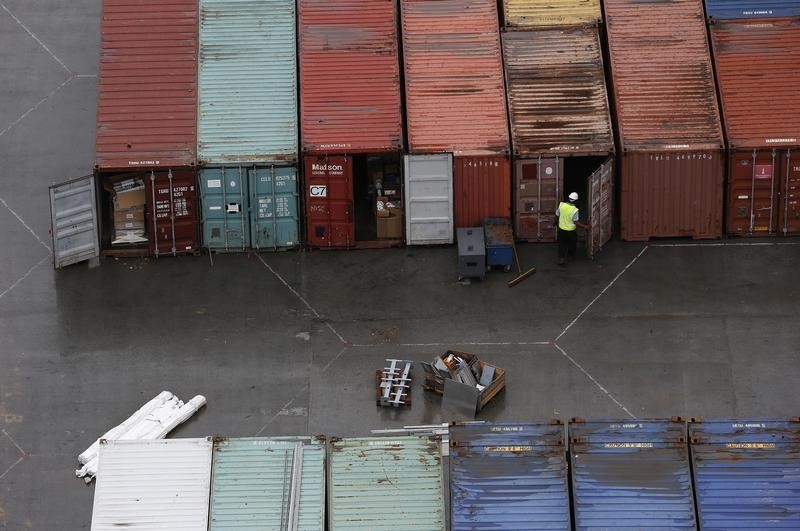By Natalie Grover
(Reuters) -Oil prices edged higher on Wednesday after sharp moves earlier in the week gave way to increased caution about the U.S. economy and nervousness persisted about the impact on supply of tensions in the Red Sea.
gained 18 cents to $76.07 a barrel by 1229 GMT, while U.S. West Texas Intermediate crude futures rose 2 cents to $70.4 a barrel.
Prices had climbed around $2 earlier in the week following attacks on vessels in the Red Sea by Houthi rebels. On Tuesday, the U.S. Central Command said they fired two anti-ship ballistic missiles into the Southern Red Sea, though no damage was reported.
A wider conflict could close crucial waterways for oil transportation and disrupt trade flows.
“Although the supply of oil has not been affected, as reflected in yesterday’s oil price sell-off, the nervousness is conspicuous,” said Tamas Varga of oil broker PVM.
Both oil benchmarks ended Tuesday more than 1% down, as optimism about early and aggressive U.S. interest rate cuts ebbed ahead of the release of Federal Reserve meeting minutes and jobs data on Wednesday.
“The market bade farewell to 2023 with a considerable liquidation of length and persisting anxiety about the geopolitical outlook failed to draw buyers back to the fore as the new year has kicked off,” added Varga.
Israeli forces intensified their bombing of the Gaza Strip on Wednesday, after the war stretched into Lebanon with the killing in Beirut of Hamas’ deputy leader.
Meanwhile, expectations of ample oil supply in the first half of 2024 have contained prices ahead of OPEC+ plans to hold a meeting of its Joint Ministerial Monitoring Committee (JMMC) in early February.
An exact date has not been decided, three sources from the alliance told Reuters.
The market’s focus will return to the demand side and whether central banks can deliver the soft landing they have aimed for, said OANDA analyst Craig Erlam.
“Any outperformance for the global economy would ease the burden on OPEC+ at a time when compliance with quotas looks like it’s going to be a struggle,” he said.
Ahead of weekly and product inventory reports, analysts polled by Reuters expected crude stockpiles fell last week, while distillate and gasoline stocks likely rose.
Read the full article here












